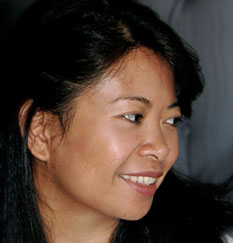Good governance in Ethiopia’s communal forests
This is the second of seven stories highlighting the recent publication of a special issue of the International Forestry Review focused on CIFOR research.
Montane grasslands and forests dominate the Bale mountain region in Oromia, Ethiopia. Like most of the rugged Ethiopian Highlands, Bale is home to endemic flora and fauna such as the African redwood, the giant lobelia, the Ethiopian wolf and Prince Ruspoli’s Turaco, a species of green bird with a blond mohawk.
However, rising urban populations and the unsustainable management of forests has led to forest degradation in Bale and the nearby Jamma-Urji mountain region. A dense forest covered the Jamma-Urji area decades ago, but over time has gradually been replaced by shrub and bare land, threatening the livelihoods of forest-dependent communities.
Deforestation and degradation have led to food shortages, increased poverty, water and energy crises.
These changes prompted the Ethiopian government to form multi-stakeholder forums (MSFs) in collaboration with international donors and civil society organizations, in an effort to conserve the region’s forests with the participation of local communities.
An analysis of two MSFs, published recently by the International Forestry Review, revealed that they are viewed with optimism in Ethiopia’s forestry sector. “A majority of the participants we interviewed believe that holding MSFs improve participation and collaboration across sectors and can potentially address power imbalances among stakeholders,” said Mastewal Yami, a policy and institutional scientist and the lead author of the study.
Growing interest in good governance
“Historically, we have had a huge deforestation problem in Ethiopia,” Yami said. “The key reason for that, apart from the biophysical factors, is a problem of governance.” Poor communities lacked equitable access to the forests, and the Ethiopian government realized the need to improve benefit-sharing among forest users.
Good governance is defined as “a decision-making process in which diverse groups of stakeholders with varied interests, capacities, and power relations collaborate to achieve the sustainable management of communal forests.” It has dominated the development discourse in Africa from the 1980s when the World Bank introduced it as a criterion for development assistance.
The study authors see MSFs as a platform that supports good governance, as it is a participatory process that encourages stakeholder involvement, building trust and shared understanding among different stakeholder groups in forest management.
“In this regard, I think people have been optimistic about MSFs in improving governance of communal forests,” Yami said.
A key partner in managing communal forests
The study also showed that the Ethiopian government plays a crucial role in the successful governance of communal forests. MSF participants believe that if their forum is “embedded” in the government—in other words, formally adopted as part of their good governance procedures in conserving or restoring communal forests — then the government can effectively mobilize resources, enforce conservation rules and help achieve the goals of the MSF.
In fact, it suggests that “failing to substantially engage the government in MSFs could either limit the success of the MSFs in bringing change in the governance of communal forests or limit the changes to the local community level.”
The caveat is that stakeholders need to make sure the government does not end up controlling the MSF’s process and outcomes, the study states.
A success and a failure
Yami and her colleagues studied the Support for Horn of Africa Resilience-Bale-Eco-region (SHARE-BER) MSF, which existed from 2014 to 2017, and the Jamma-Urji Farmer Managed Natural Regeneration MSF which was active from 2014 to 2016.
Both forums focused on the conservation or restoration of communal forests—38,036 square kilometers in Bale, most of it within the Bale Mountains National Park, and 65 square kilometers between the Jamma and Urji mountains between Shashshemene and Shallaweredas in the West Arsi zone.
Communal forests in Ethiopia are managed by local communities with the support of local administrative institutions. Bylaws define who can use the resources, how these can be accessed, and guidelines for mobilizing collective action to prevent degradation.
The Bale and Jamma-Urji MSFs focused on the rehabilitation of degraded areas of the forests, biodiversity conservation and the development of land-use plans. But while organizers and participants in the study perceived the Bale MSF as successful, they viewed the Jamma-Urji MSF as one that had failed.
The study attributed the Bale MSF’s success to its use of the multisectoral approach in planning and implementation. Participants said the approach improved the enforcement of the communal forests’ rules, thus supporting the MSF’s conservation goals. Participatory Forest Management (PFM) Cooperatives and multi-stakeholder task forces also helped in rule enforcement, such as preventing people from encroaching into the forest and clearing it for firewood or farming as part of their livelihoods.
Forest encroachment and clearing was a bigger problem in Jamma-Urji. Interviewees in the area attributed this to the lack of attention and action on the dependence of women and youth on forest resources. With few alternative livelihood options, they have for years resorted to free grazing in the forest.
The Jamma-Urji MSF declared the area as an enclosure to restore the degraded land. And although the MSF formed a PFM cooperative to protect the area, it failed to enforce its own bylaws.














